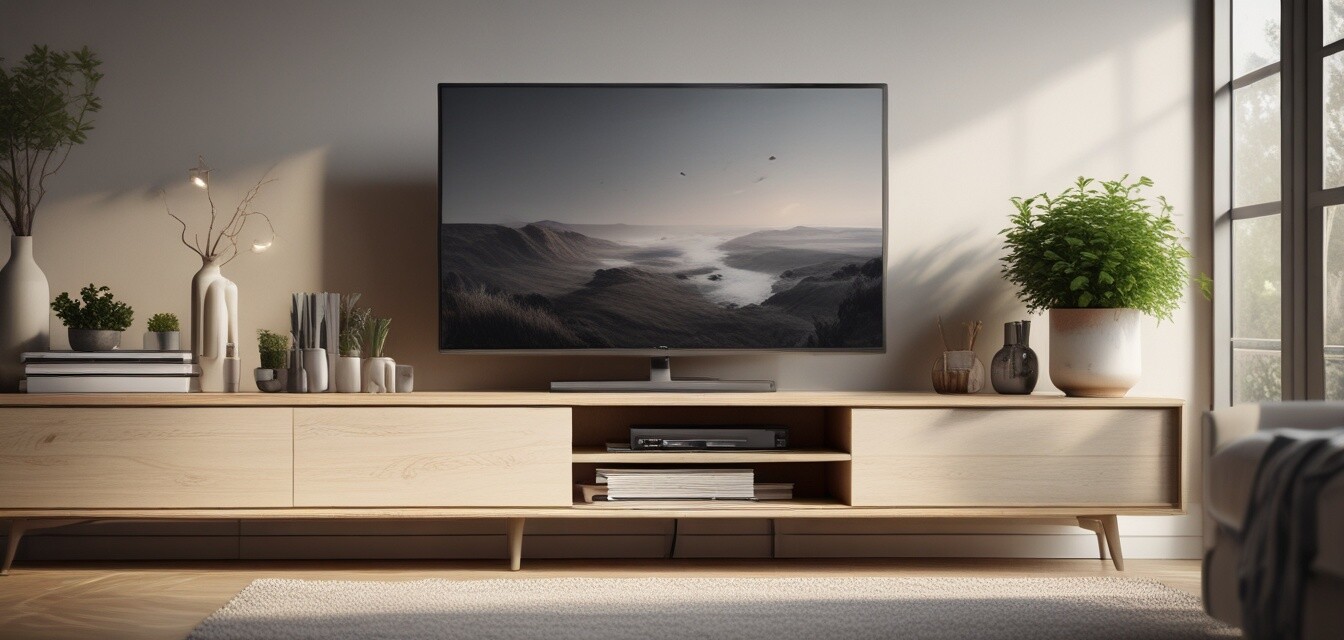
The Global Shift Towards Sustainable Manufacturing
- The furniture industry, especially TV stands, is increasingly adopting sustainable manufacturing practices.
- Consumers are prioritizing eco-friendly materials in their purchasing decisions.
- Emerging technologies are aiding the shift towards sustainability in design and manufacturing.
- Collaboration between brands and manufacturers is essential for sustainable innovation.
The furniture industry is witnessing a profound transformation, with a spotlight on sustainability leading the charge. As awareness of environmental challenges grows, more consumers are opting for eco-friendly solutions, particularly in furniture choices like TV stands. This article explores the global trends towards sustainable manufacturing processes within this sector and how it can shape the future of home furnishings.
Understanding Sustainable Manufacturing
Sustainable manufacturing entails utilizing eco-friendly materials, reducing waste, and minimizing environmental impacts during production. This approach aligns with the broader objective of fostering sustainable living environments that are kind to the planet.
Why focus on TV stands?
TV stands are more than just furniture; they're a focal point in living spaces for many households. As such, their impact on the environment during manufacturing becomes significant. Sustainable TV stands made from responsible materials can positively influence consumer behavior and environmental conservation.
Current Trends in Sustainable Manufacturing
Across the globe, various trends are shaping the sustainable manufacturing landscape in the furniture industry. Let's explore some of these key trends that are particularly relevant to TV stands:
| Trend | Description | Impact |
|---|---|---|
| Use of Recycled Materials | Incorporating materials like recycled wood or metal in production. | Reduces waste and lessens the need for new resources. |
| Eco-friendly Coatings | Using low-VOC or natural finishes to treat surfaces. | Minimizes harmful emissions and promotes healthier indoor air quality. |
| Energy-efficient Production | Employing renewable energy sources in manufacturing facilities. | Decreases the carbon footprint of production processes. |
| Sourcing Local Materials | Utilizing locally sourced wood and materials for manufacturing. | Supports local economies and reduces transportation emissions. |
| Modular Designs | Creating versatile and repairable furniture pieces. | Extends product lifespan and reduces waste over time. |
Consumer Demand for Eco-friendly Products
In recent years, consumer demand for sustainable products has surged. Shoppers are becoming increasingly conscious of their environmental impact, leading to a preference for furniture that reflects their values. A study found that:
- Over 70% of consumers consider eco-friendliness when making a purchase.
- More than 60% are willing to pay extra for sustainable products.
- Millennials and Gen Z are particularly driving this demand.
This shift emphasizes the importance of sustainable manufacturing in meeting consumers' expectations and preferences. Brands that align with these values are likely to see increased loyalty and market share.
Emerging Technologies and Innovations
Technology plays a crucial role in facilitating sustainable manufacturing practices. Innovations in production techniques, design, and materials are paving the way for a more eco-friendly furniture industry. Here are some noteworthy advancements:
- 3D Printing: Facilitates on-demand production and reduces waste.
- Smart Manufacturing: Utilizes AI and IoT for optimizing resource use and production efficiency.
- Biodegradable Materials: Development of new materials that decompose over time.
The Role of Collaboration in Sustainability
Sustainability in manufacturing is a collective responsibility. Collaboration between furniture brands, manufacturers, suppliers, and consumers is essential to drive meaningful change. Here are some ways collaboration can enhance sustainable practices:
- Supply Chain Transparency: Encouraging suppliers to adopt eco-friendly materials and processes.
- Knowledge Sharing: Connecting businesses to exchange sustainable practices and innovations.
- Consumer Engagement: Informing consumers about the importance of sustainable choices and how to identify them.
Looking Ahead: A Sustainable Future for TV Stands
As the global push towards sustainability continues to grow, the furniture industry, particularly in TV stands, will evolve. Manufacturers who embrace eco-friendly practices and leverage innovation will lead the way in creating a greener future.
For more insights on eco-friendly furniture, check our categories on eco-friendly living and buying guides to explore more about how to make sustainable choices in your home.
Pros
- Reduced environmental impact
- Healthier indoor living spaces
- Support for local economies
- Longer-lasting products
Cons
- Potentially higher initial costs
- Limited availability in certain regions
- Longer lead times for custom eco-friendly furniture
Conclusion
The shift towards sustainable manufacturing in the furniture industry, especially concerning TV stands, is not just a trend but a necessity. As consumers become more environmentally conscious, the industry is adapting to meet these needs. By embracing sustainable practices, manufacturers can not only contribute to environmental conservation but can also gain a competitive edge in the marketplace.
Stay updated with the latest in sustainable furniture by following our news and trends section to learn about the evolving landscape of sustainable home furnishings.